Not your grandfather’s glasses, that’s for sure!

The golden dream is that one day we will have inconspicuous, robust, and attractive consumer AR glasses that will be worn as commonly as we wear sunglasses or corrective eyeglasses today. That dream will be realized, but it is taking a bit longer than anyone had anticipated—it is a really difficult challenge with a lot of variables and currently some barriers that are difficult to get past.
But some powerfully large tech companies and a couple of ambitious start-ups are working on it, and all seem committed to the dream.
Probably the company under the greatest scrutiny is Apple, and word leaked out about a demo given to the company’s board of directors last week. According to various anonymous reports and echoes of such reports (and here is another one), Apple BOD members got to see the latest developments of Apple’s AR glasses project and allegedly said it was in an advanced stage. Speculation is Apple may show it at their developer’s conference in June.
Several companies have shown smart glasses that have had some AR capabilities—and also managed to look good. One of the standout companies was North, a Canadian company formed in 2012 and originally backed by Amazon. In July 2020, Google bought the company and took it silent.
But it wasn’t as corporately brain dead as it appeared. Google had (has) a vision. They revealed it in 2014 and called it Glass. They revealed it again a few weeks ago when they confirmed (via a blog) they had acquired Raxium, a Fremont, California, company started in 2017 that develops microLED displays. So what, Google acquires companies every day. Except Raxium is like microLED builder LuxVue based Cupertino, which was acquired by Apple in 2014.
MicroLED is easy and sexy to say but damn hard to do. Especially when you’re trying to do it at a few microns. MicroLEDs will allow impinging pixels in the retina’s FOV without obstructing the real world—a genuine floating display that is everywhere you look. Your own personal HUD. And microLEDs are very small power users.
What could you do with such a tiny, and surprisingly bright, full-color, high-resolution display?????? Hmmm…. Well, you might be able to build a pair of glasses that look like glasses and not some 1960s sci-fi helmet.
And who would know how to exploit such a display and build an attractive pair of glasses? Look to the north, Luke, look to the north.
If you want to know how you’re going to get all the data needed for those glasses, look to the south.
AR smart and attractive glasses need to know everything. Where they are, where you are looking, where you are heading, what the ambient is like in terms of sound and light, and more. Oh, you mean like what your smartphone does now? And who builds smartphone operating systems? And who builds smartphone SoCs? Gee, Apple, Samsung, and Qualcomm.
So, Qualcomm just revealed their latest smart viewer reference design. Qualcomm has been working on what they like to call XR (because they don’t want to leave any consumer behind) for years. Qualcomm created Vuforia in 2011, which powers PTC’s AR system and dozens of others. But Qualcomm’s secrete sauce (well, it not really a secret) is gees—five now, six coming. That and a power skinflint GPU that can drive two 1080p OLED screens at 90 Hz and use its 5G to keep the data coming to feed those displays.
The stalking horse in this parade of big tech companies positioning themselves to dominate the biggest disruptive consumer device since the PC or smartphone is Amazon. Alexa, where is Amazon’s AR?
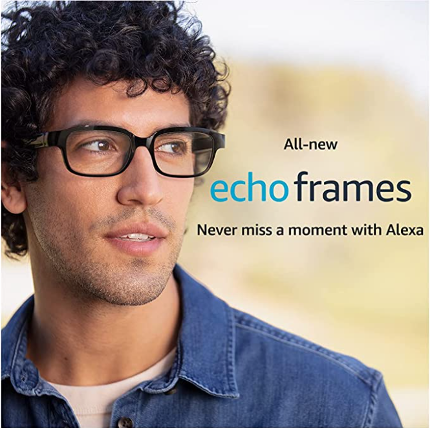
Wait, what? Amazon is already there?
AR doesn’t mean you have to see arrows to the nearest Starbucks; you can be told how to go there. And who loves to tell you things more than Alexa (OK, Siri and Google Assistant are big blabbermouths too).
The thing about AR glasses is they can be hands-free. Of course, you do run the risk of looking like an idiot by talking to your imaginary friend as you walk through town or an airport, but that’s better than making new friends by walking into them with your head down. Face it, the social norms have changed—get on the bus, Gus.
And since Amazon funded the best-looking smart glasses company 12 years ago, you don’t think they have stopped working on AR, do you?
We looked north, and south, but we also have to look west, unless you’re in Turkey, or India, then you’d look east. One of the pioneer companies to offer consumer-grade AR glasses has been Korean-based Nreal, which modestly describe their product as a small step to the dream.

Nreal is really close to that goal. They’ve chosen to go for the absurd look rather than the inconspicuous, with bright neon colors and thick plastic—a very hip but age-specific look. You wouldn’t wear them, but your kids and grandkids would (and already might).
 In the comic-look section, we also find Chinese-based Snap. Snap’s consumer-targeted glasses have two “I may be watching you” robot-like-inspired cameras that can capture 3D photos and videos with four built-in microphones.
In the comic-look section, we also find Chinese-based Snap. Snap’s consumer-targeted glasses have two “I may be watching you” robot-like-inspired cameras that can capture 3D photos and videos with four built-in microphones.
Snap’s glasses aren’t really AR spectacles—yet. But Snap has an AR lab with a library of apps, not the least of which is ray tracing for Pokemon-like characters and things like sofas that you might want to check out in your house before you buy them.
There are several other companies that have, or promise to have, consumer-quality (lightweight, inconspicuous, affordable, Web-compatible) AR glasses, such as:
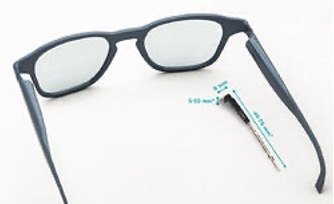 Bosch BML500P Smartglasses use MEMS mirrors, optical elements, sensors, and onboard processing. The company claims its integrated solution can delivers a clean visual experience with bright images, always in focus—even in direct sunlight. Bosch is targeting outdoor sports consumers like bicycle riders. Intel tried that a few years ago and gave up.
Bosch BML500P Smartglasses use MEMS mirrors, optical elements, sensors, and onboard processing. The company claims its integrated solution can delivers a clean visual experience with bright images, always in focus—even in direct sunlight. Bosch is targeting outdoor sports consumers like bicycle riders. Intel tried that a few years ago and gave up.
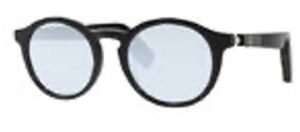 Lucyd Lyte frames is also a sound-oriented system that allow listening to music with the ability to change tracks, make and answer calls, and use Siri, Google Assistant, or Alexa. The smart
Lucyd Lyte frames is also a sound-oriented system that allow listening to music with the ability to change tracks, make and answer calls, and use Siri, Google Assistant, or Alexa. The smart
eyewear, as Lucyd brands them, can accommodate vision correction and protection, as well as smart features with Bluetooth call answering, play/pause, track skip, volume adjustment, and voice assistant activation.
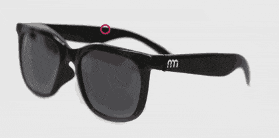 Norm Glasses claim their spectacles are designed for everyday use, are stylish, comfortable, and loaded with patented features that will make you forget that you are wearing glasses. They offer turn-by-turn navigation, capturing photos and video, receiving, and making calls and text messages, and listening and watching instructions. The lenses come with different options: tinted, transition, polarized, and clear, all with or without a prescription.
Norm Glasses claim their spectacles are designed for everyday use, are stylish, comfortable, and loaded with patented features that will make you forget that you are wearing glasses. They offer turn-by-turn navigation, capturing photos and video, receiving, and making calls and text messages, and listening and watching instructions. The lenses come with different options: tinted, transition, polarized, and clear, all with or without a prescription.
TCL’s Wearable Display is a pair of glasses with two 1080p Mini OLED screens on the inside. The glasses connect to a device with USB-C. The upcoming glasses are promised to produce the effect of viewing a 140-inch display from 4 meters away, with a density of 49 pixels per degree. They’re also capable of displaying 3D content.
 Vue’s unisex smart glasses features audio technology, touch control, voice assistant, and Find My Glasses! Vue’s bone conduction audio transfers stereo sound to your inner ear so you can listen to music, answer calls, and hear notifications while still hearing the world around you. Vue Lite comes with fewer features but functions without the app. Vue comes in two models: Pro/Original and Lite.
Vue’s unisex smart glasses features audio technology, touch control, voice assistant, and Find My Glasses! Vue’s bone conduction audio transfers stereo sound to your inner ear so you can listen to music, answer calls, and hear notifications while still hearing the world around you. Vue Lite comes with fewer features but functions without the app. Vue comes in two models: Pro/Original and Lite.
In the R&D area, Nvidia has been poking at AR for a while, usually showing their research at SIGGRAPH. This year they will be back at SIGGRAPH and showing their latest developments, which for some strange reason they’ve labeled VR.

Nvidia points out that most virtual reality users access 3D digital worlds by putting on bulky head-mounted displays; Nvidia thinks they have a lightweight alternative that resembles standard eyeglasses.
Developed in collaboration with Stanford, the researchers have some technology that could be useful for viewing 3D and maybe holographic images into a wearable display only a couple millimeters thick. That is less, claims Nvidia, than half the size of other thin VR displays, known as pancake lenses, which use a technique called folded optics, which can only support 2D images.
The researchers say they have accomplished this feat by approaching display quality and display size as a computational problem and co-designing the optics with an AI-powered algorithm.
While prior VR displays require distance between a magnifying eyepiece and a display panel to create a hologram, this new design uses a spatial light modulator, a tool that can create holograms right in front of the user’s eyes, without needing this gap. Additional components—including a pupil-replicating waveguide and geometric phase lens—further reduce the device’s bulkiness. I think Nvidia is being a little generous in their description; it is highly doubtful that real holograms are used given the voxel density of holograms.
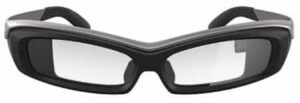 Missing from the big tech consumer AR suppliers, researchers, and wannabees is Microsoft and Sony. Sony made SmartEyeglass in 2015, basically a head-worn set of displays with a 20-degree FOV and a front-facing camera. They sold for about $700. Sony has also shown some tech for AR with a bulky head-mounted system
Missing from the big tech consumer AR suppliers, researchers, and wannabees is Microsoft and Sony. Sony made SmartEyeglass in 2015, basically a head-worn set of displays with a 20-degree FOV and a front-facing camera. They sold for about $700. Sony has also shown some tech for AR with a bulky head-mounted system
Microsoft is making the HoloLens AR headset for the military and some industrial allocations, and so far, hasn’t shown any interest in the consumer market. But there is no doubt the company will enter the market as soon as it is established by Apple and others.
The AR market, such as it is, is segmented between consumer companies listed above and the industrial/scientific suppliers and several component and IP providers.
The smaller companies don’t really have a chance. The big tech companies will take the consumer AR market and no prisoners. They have to. Apple will carve out a percentage with its loyal closed-garden customers. Amazon will do the same. Google will get a share but not be as dominant as Amazon or Apple. The others will be companies like Snap and the niche players like Bosch.
But all these companies are learning from one another, watching one another closely, looking for the little breakthroughs that are going to get them closer to the dream AR promises. When everyone is wearing a full-time recording device that knows exactly where the wearer is and if he or she is standing up or lying on the ground, people’s behavior toward one another will change. It won’t be Big Brother watching; it will be Big Brother, mother, father, sister, and the whole damn world. Our AR systems will be our personal black box, and if we get in trouble, there will be record of it—somewhere. There will also be a record of our happiest experiences—some of which we will likely take off our glasses for.





